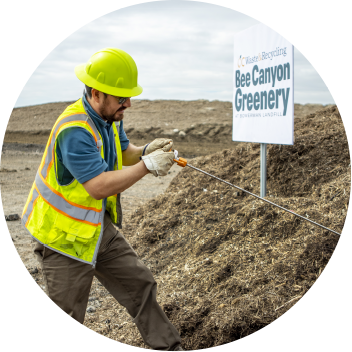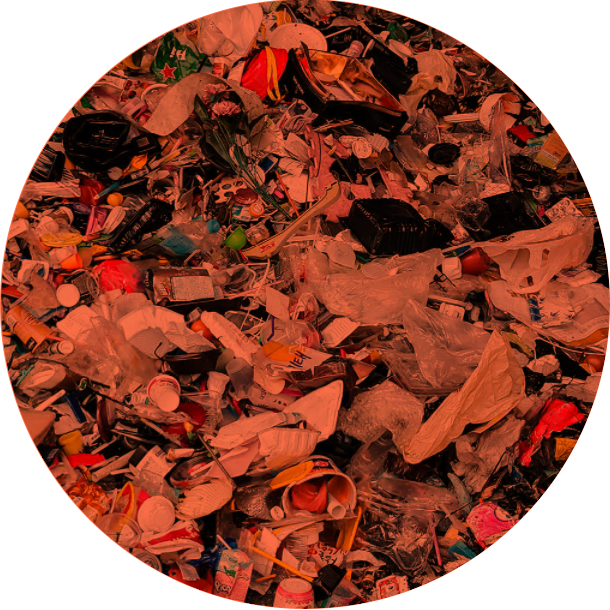These regulations kept us busy in 2018 as we planned and prepared for the impacts of AB 1594, SB 1383 and AB 1826.
Beginning in January 2020, three key pieces of legislation will have significant impacts on cities, haulers and our own landfill operations. Together we are working on solutions to divert Processed Green Material (PGM) that will no longer count as diversion when used as Alternative Daily Cover (ADC) and other organic material that is currently being disposed of in the landfill.
We educated schools, multi-family complexes and businesses that will be required to have organic recycling programs under the new requirements of AB 1826. We diligently researched alternatives to PGM since we will no longer be using it as ADC in January 2020. Lastly, we continued to prepare for the impact of SB 1383. We launched composting pilot programs, trained staff and began preparing for the future of waste management, which focuses on organics diversion and edible food recovery.

SB 1383 uses methane emissions reduction as the driving force for organic waste diversion and edible food recovery. The two-part bill seeks to reduce organic waste by 75 percent and recover 20 percent of disposed edible food for human consumption by 2025.
AB 1826 launched on January 1, 2016. It calls for mandatory commercial organics recycling. Through incremental implementation, this bill and others seek to reduce statewide disposal of organic waste by 50 percent by January 1, 2020.
AB 1594 redefines PGM used for ADC as material for disposal rather than diversion. Orange County is one of the largest users of PGM as ADC at our landfills in California, and is thus developing local infrastructure to process this material so that the region may continue to receive diversion credit for this material.
The turbulence that characterized the 2018 recycling export markets shows no signs of stabilizing. The shift in overseas disposal of recovered materials began in 2013 when China implemented the Green Fence customs crackdown to enforce import regulations. The National Sword movement followed. It brought inspections and assessments of recovered material quality, imposed strict contamination limits and banned illegal imports of recovered materials into China. The result is a dramatic slowing of shipments of recovered materials to China and Southeast Asian countries and an increase in stockpiling and landfilling recyclables in the United States.
In March, China announced Blue Sky 2018. Aimed at enforcing import restrictions and eliminating scrap imports, it continues the transformation launched by Green Fence and National Sword. Recycling rates continue to decline in California and the United States. With the instability of international markets for recyclable materials, California’s exported recyclables have decreased by almost 2 million tons, or about 11 percent, in the last three years. California’s recycling rate in 2017 was 42 percent, which is a continuation of the recycling rate decline since the peak of 50 percent in 2014.
The state’s waste management system is facing major challenges. Residents and businesses are generating and disposing of more material every year; 2017 marked the fifth consecutive year of disposal rate increases. International markets are no longer a viable strategy for recycling. The current lack of infrastructure for domestic manufacturing of recycled materials is limited and crucial to California meeting its 75 percent statewide recycling goal.


In 2018 CalRecycle launched a statewide waste characterization study to better understand the types and amounts of materials disposed in and diverted from California’s waste stream. Because California’s waste management system has changed significantly in recent years (and will continue to evolve), CalRecycle adjusted its methodology to be facility-based, rather than conducted at sources of waste generation. OCWR’s Frank R. Bowerman and Olinda Alpha Landfills were recruited to be sampling sites and participated in the study. By providing up-to-date information to CalRecycle, OCWR will help CalRecycle determine where changes are needed and help guide strategies to reach new recycling and diversion goals in 2020 and beyond.